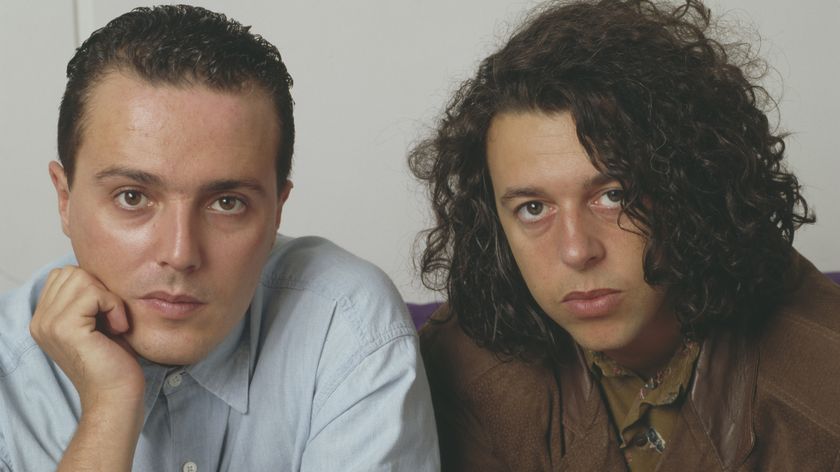Anatomy of a hit: The Beatles - Back In The USSR dissected
We analyse the side-one opener from The Beatles' 1968 'White Album'
Part homage to Chuck Berry, who had a hit with Back In The USA, and also nodding to The Beach Boys both lyrically and with its backing vocals, Back In The USSR still sounds unmistakably like a Beatles record.
Written by Paul McCartney but credited to John Lennon as well, it was the opening track on The Beatles' eponymous 1968 double LP (also known as The White Album), and has a classic pop/rock arrangement.
Here, we get into the guts of the song to try and work out why it hangs together so well.
0:00 - Intro
The song begins with the sound effect of a jet plane coming in to land, followed by a four-bar intro on an E7 chord that neatly anticipates the A chord on the downbeat of the verse.
0:15 - Verse 1
The song gets into its stride as Paul begins to narrate the back story, about how he flew in from Miami Beach and didn't get to bed last night. The verse section lasts eight bars, made up of two repeats of the A - D - C - D chord progression.
0:28 - Chorus 1
The chorus is slightly unusual here, as it only lasts a total of six bars - the first three made up of a rearrangement of the existing chords from the verse section (A - C - D) followed by a repeat of the chorus vocal hook "Back in the USSR", and a final two-bar link into the second verse.
0:52 - Chorus 2
After a second verse that is, musically, a carbon copy of the first, we get the second chorus, complete, like the first, with vocal hook and lead guitar riff to distinguish it as such. However, this time round, the "Back in the USSR" vocal hook gets not one repeat but three, extending the length of this chorus to an even more unorthodox seven and a half bars.
Get the MusicRadar Newsletter
Want all the hottest music and gear news, reviews, deals, features and more, direct to your inbox? Sign up here.
1:04 - Tag
At this point we get a completely new section, made up of Beach Boys-style backing vocals and Paul extolling the virtues of Ukrainian girls and how they leave the west behind. The new D - A - D - Bm7 - E7 - D7 - A chord progression covers eight bars, followed by an extra, two-bar A - E turnaround that sets up the subsequent guitar solo.
1:21 - Solo
The lead guitar takes over from the vocal, playing a raucous, bendy solo over a straight set of verse chords. This section is the same length as all the other verse sections, coming in at eight bars, followed swiftly by a repeat of the first, six-bar chorus and another ten-bar tag section.
2:01 -Verse 3
A last eight-bar verse section has the vocal describing snow-peaked mountains way down south, joined by a screaming lead guitar part playing rapid notes on a high A. This is followed by a final, six-bar chorus section.
2:25 - Outro
The outro section simply pedals on an A blues riff with lots of "Woo-oo-oo" backing vocals for six bars, before ceding to more jet plane sound effects to round off the perfect 2:40 pop arrangement.
Computer Music magazine is the world’s best selling publication dedicated solely to making great music with your Mac or PC computer. Each issue it brings its lucky readers the best in cutting-edge tutorials, need-to-know, expert software reviews and even all the tools you actually need to make great music today, courtesy of our legendary CM Plugin Suite.

“Ozzy drove us all nuts with that Moog thing. But the song was great”: How Black Sabbath took a surprise left turn on the classic album Sabotage

“It was originally called Everybody Wants To Go To War, which I knew didn’t work. When you’re a songwriter who doesn’t like the lyric, the song dies”: How Tears For Fears created an ’80s mega-hit











